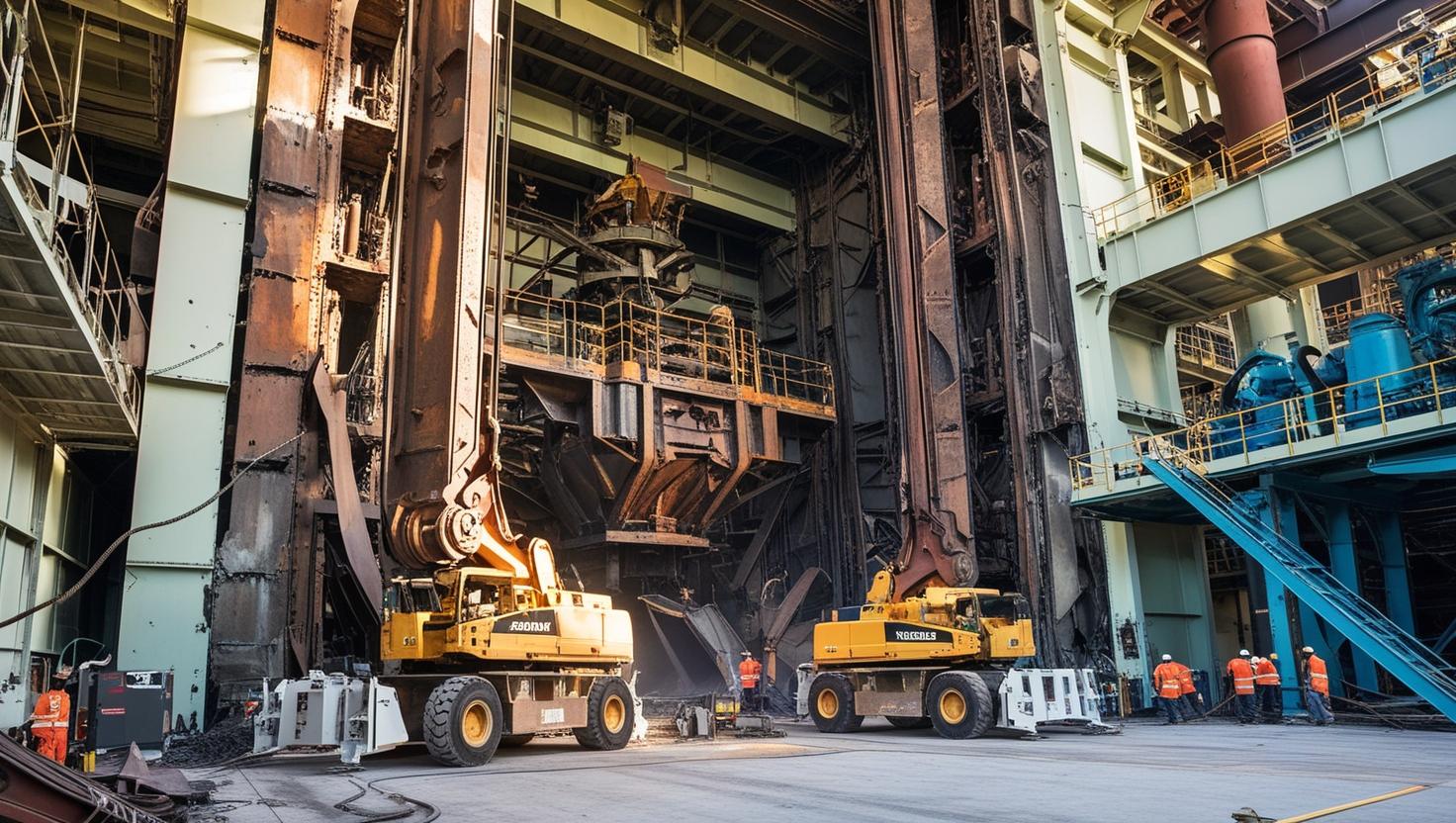
The Dismantling of
Industrial Plant and Machinery
An essential process for safety, environmental protection and recycling
The dismantling of industrial plant and machinery is an important part of the industrial value chain that is often underestimated.
It is the process of safely, efficiently and environmentally consciously dismantling plant and machinery that is either obsolete, to be rebuilt or reused in another operation. This action may be necessary for a variety of reasons, including modernisation, relocation of production or the decommissioning of factories.
Why is Disassembly important?
Dismantling is a complex process that involves both logistical and technical challenges. It requires not only expertise and experience, but also consideration of legal requirements and safety-related aspects.
Companies are often faced with the challenge of removing obsolete or no longer profitable machines and systems in an orderly and safe condition.
Proper dismantling minimises the dangers of decommissioned machines and ensures that no harmful substances are released into the environment.
Sicherheitsaspekte bei der Demontage
Safety is the decisive factor when dismantling industrial plants. Machines and systems often contain hazardous substances such as lubricating oils, chemicals or asbestos. Improper handling of these materials can cause serious health risks for workers and environmental damage. For this reason, dismantling processes must be carried out with the utmost care and in accordance with the applicable safety regulations.
Before dismantling, all sources of danger must be identified and appropriate safety measures taken. These include, among other things:
- Pumping out hazardous liquids and gases
- The professional disposal of hazardous substances
- Securing areas with high risk
- The use of trained personnel with appropriate protective equipment
Environmental and Resource Protection
Environmental protection is an increasingly important aspect of dismantling. The proper separation and recycling of materials contributes significantly to the reduction of waste and promotes the circular economy. Metal parts, such as steel and copper, can be melted down again and used in new production processes. Electronic components and plastic materials can also be reused or properly recycled, depending on their condition.
Another important point is the safe disposal of toxic substances such as mercury or PCBs (polychlorinated biphenyls) that may be contained in older machines. Improper disposal could not only harm the environment, but also lead to legal consequences for the company.
Technical Challenges of Dismantling
Dismantling industrial plants is a technically demanding task. A detailed dismantling concept must be developed, especially for large machines or complex production plants. The most important aspects include:
Careful planning:
- Dismantling should be carried out in close consultation with engineers and technicians* who know the exact condition of the machines and systems. A detailed plan helps to organise the process efficiently and avoids unnecessary risks.
Specialised technology:
- In many cases, specialised machinery or lifting equipment is required to move or dismantle large parts of the equipment. These must either be hired or provided by the company.
Professional dismantling:
- The right tools and qualified specialists are essential to carry out dismantling professionally. This applies not only to mechanical components, but also to electrical and electronic components, which must be handled with care.




